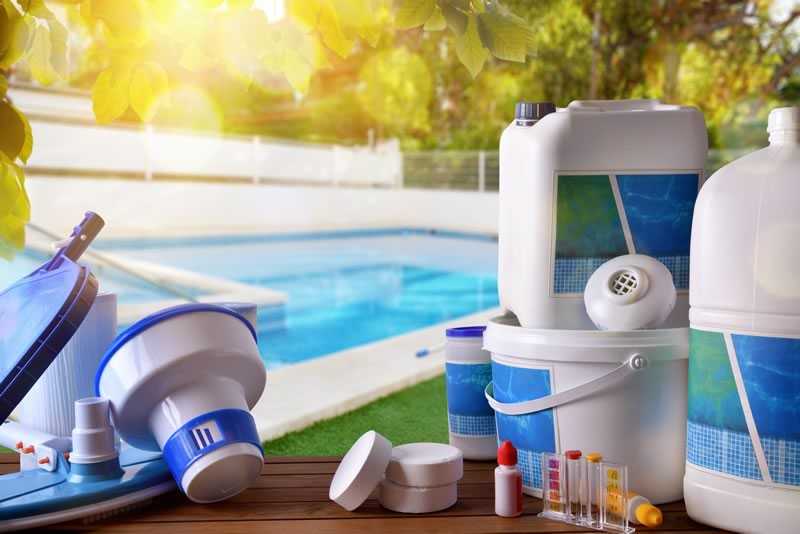PH is a very significant factor and exerts the most influence on the scale formation or corrosives of your sanitizer (chlorine/bromine). The Ph of your pool water will determine the efficiency of the sanitizer. We define Ph not as the measurement of the total amount of acid or base in a pool, but as a measurement of the “activity” of the acid or alkali present. Acids are chemicals that form Hydrogen Ions( H+) when dissolved in water. Bases<Alkaline materials> are compounds which form Hydroxyl Ions (OH-) when dissolved in water. Thus, the term Ph stands for “Possible Hydrogen Ions”. When you have a high Ph it can cause cloudy water, poor or no disaffection, scale formation on the walls, clogged filters (due to scale formation), damaged heaters, mineral staining, algae growth and eye irritation. If you have a low Ph you could get corrosion and rusting, rapid loss of disinfectant, etching of plaster, damage to vinyl liners, eye irritation, etching of tile, and also tiles popping off the walls. Ph is a very important factor as you see and should always be taken serious at all times of the year.
The Ph scale runs from 0 to 14. A Ph of 7.0 is considered neutral. Values below 7.0 are acidic, Ph values above 7.0 are consider to be basic. The suggested Ph range for pool water is 7.2 to 7.6, ideally the Ph of your pool should be 7.4. MARATIC ACID can used to lower the pool’s Ph. SODA ASH has a Ph of 11.5 and is used to increase the pool’s Ph.
| pH Chemical Chart | |
|---|---|
| pH | Pool or Spa Chemical |
| 1.0 | Gas Chlorine |
| 2.0 | (non-chlorine shock) |
| 2.8 | Trichlor (slow-dissolving stabilized chlorine compound, tablet or granular ) |
| 3.8 – 4.0 | Bromine Tablets |
| 4.0 | Cyanuric Acid (Conditioner or Stabilizer) |
| 6.8 | Dichlor (granular chlorine compound containing Chlorine & Cyanuric Acid) |
| 7.5 | Ideal Pool and Spa pH |
| 8.3 | Sodium Bicarbonate (Baking Soda) |
| 10.0 | Lithium Hypochlorite (rapid-dissolving granular chlorinating compound) |
| 11.0 | Calcium Hypochlorite (Cal Hypo) |
| 12.0 | Sodium Carbonate (Soda Ash) |
| 13.0 | Sodium Hypochlorite (Liquid Chlorine) |


